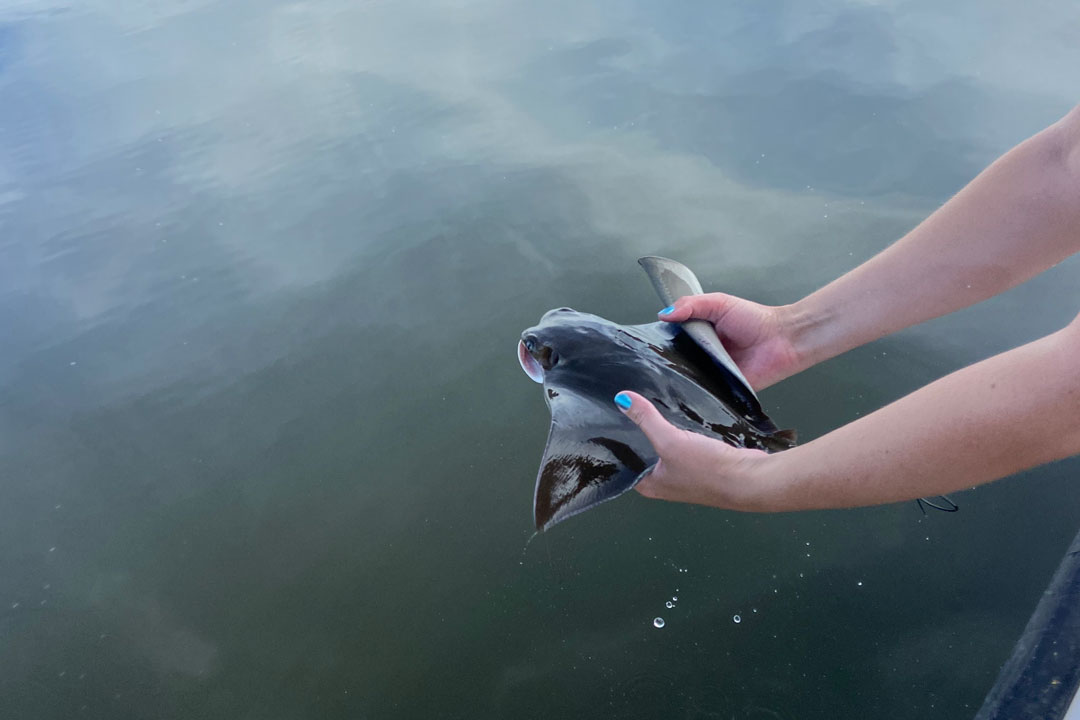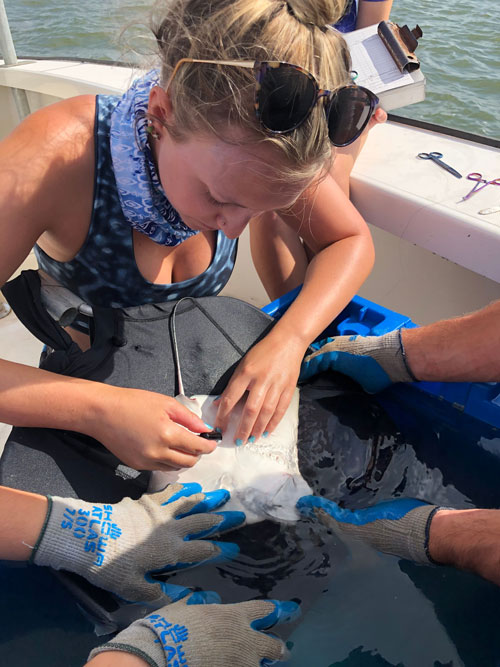Cownose rays: what are they doing in Apalachicola Bay?
Movement studies have been conducted for cownose rays along the East coast using acoustic tracking, showing that cownose rays undergo long seasonal migrations between the Chesapeake Bay and south Florida. However, very little is known about their movement behaviour in the Gulf of Mexico. Our lab has been conducting shark surveys in Apalachicola Bay, Florida for several years, in which we have captured both adult and newborn cownose rays in the summer months. With a recent collapse of the oyster fishery and a 5-year closure on wild oyster harvest in the bay, a cownose ray movement study is both timely and immediately informative.

Acoustically tagged young-of-year cownose ray being released in Apalachicola Bay, Florida. Photo © Laura Matheson
For this project, I am acoustically tracking adult cownose rays and pups in Apalachicola Bay, Florida to 1) learn more about their general movement ecology in the Gulf of Mexico, 2) describe seasonal patterns of habitat use within the bay for different life stages, and 3) compare cownose ray habitat use and previous cownose ray bit force studies to quantify the true predation potential of rays on oysters they are actually capable of eating.
To track the rays, we implant a small acoustic transmitter into the body cavity, which emits a unique ping at a fixed interval that can be detected by stationary acoustic receivers throughout the study system. If animals leave the bay and get detected on other acoustic arrays, detection data will be received through the FACT or iTag telemetry data-sharing networks. Thanks to the Save Our Seas Foundation, we were able to tag 20 cownose rays in the summer of 2021, which included both adults and pups. We were quite excited to locate a mating aggregation, in which we captured over 70 adults (and deployed all of our adult tags) in one day! Several weeks later, pups were tagged at the same location. We have been tracking these individuals for almost a year now and will be very excited to see where all they have gone as we finish downloading our acoustic receivers over the next month.

Ashley Dawdy implanting an acoustic tag in a young-of-year cownose ray. Photo © Nora Jolowsky
With additional grant funding earned this year from the Guy Harvey Ocean Foundation, American Elasmobranch Society, and Women Divers Hall of Fame, we will be tagging 16 more rays in the summer of 2022 to increase our tagging effort and learn more about the habitat use patterns of these rays. With some preliminary knowledge about what cownose rays are doing in the Apalachicola Bay system, we plan to expand our sampling this year to learn more about their ecological role in this biologically important estuary. Stay tuned for updates about what we learn!

Ashley Dawdy preparing to acoustically tag an adult female cownose ray with the help of fellow graduate students Rachael Best and Schyler Ellsworth. Photo © Brian Moe
